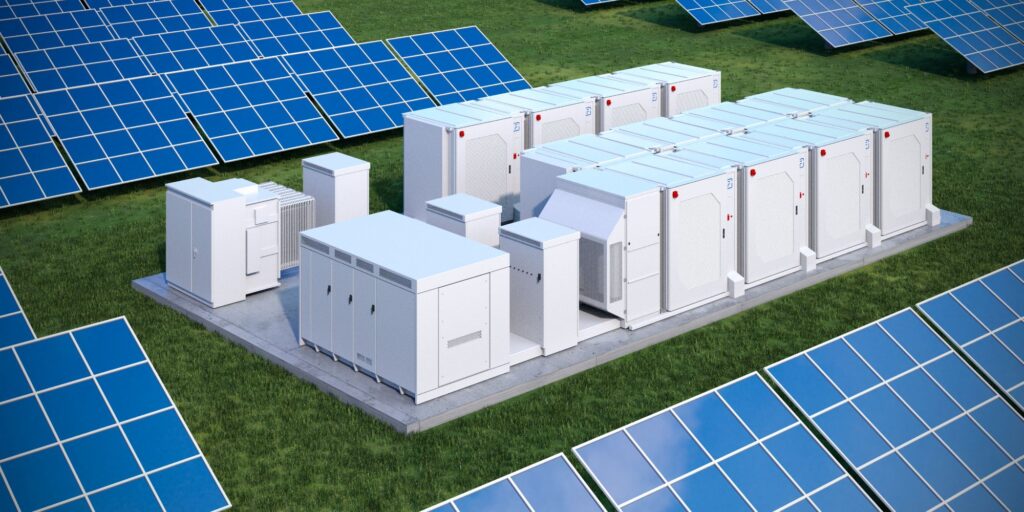The two main types of energy storage batteries used in solar systems are:
- Lead-Acid Batteries:
- Flooded Lead-Acid Batteries (FLA): These are traditional lead-acid batteries that contain a liquid electrolyte. They require regular maintenance to check and refill the electrolyte levels. FLA batteries are often used in off-grid solar systems and are cost-effective but require careful handling and maintenance.
- Valve-Regulated Lead-Acid Batteries (VRLA): VRLA batteries, including Absorbent Glass Mat (AGM) and Gel batteries, are sealed lead-acid batteries. They are maintenance-free and more suitable for applications where regular maintenance is challenging. AGM batteries use a fiberglass mat to absorb the electrolyte, while Gel batteries use a gel-like electrolyte. VRLA batteries are commonly used in both off-grid and grid-tied solar systems.
- Lithium-Ion Batteries:
- Lithium-Ion (Li-ion) Batteries: Lithium-ion batteries have become increasingly popular in solar energy storage due to their high energy density, longer cycle life, and lower maintenance requirements compared to lead-acid batteries. Various lithium-ion chemistries are used in solar applications, including Lithium Iron Phosphate (LiFePO4 or LFP), Lithium Nickel Manganese Cobalt Oxide (NMC), and others. Li-ion batteries are known for their efficiency, compact size, and ability to provide reliable power for solar systems.
- Lithium Iron Phosphate (LiFePO4) Batteries: LiFePO4 batteries are a specific type of lithium-ion battery known for their stability, safety, and longer cycle life. They are commonly used in solar systems where safety and longevity are key considerations.
Choosing between lead-acid and lithium-ion batteries depends on various factors, including the specific requirements of the solar system, budget constraints, and the preferences of the system owner. Lead-acid batteries are still widely used, especially in smaller or budget-conscious installations. However, lithium-ion batteries are gaining popularity due to their higher efficiency, longer lifespan, and decreasing costs over time. The choice between these two types of batteries should be based on a careful evaluation of the system’s needs and the available technology options.


